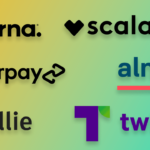Now Reading: Your Complete Guide to Commercial Construction Financing
-
01
Your Complete Guide to Commercial Construction Financing
Your Complete Guide to Commercial Construction Financing

Getting a commercial construction project off the ground is an exciting venture. Whether you’re building a new retail space, an office complex, or a multi-family housing unit, turning your vision into a physical structure requires significant capital. This is where commercial construction financing comes into play. It’s the financial backbone that supports your project from the initial groundbreaking all the way to the final coat of paint. Understanding how this specialized type of funding works is the first crucial step toward a successful build.
This guide will walk you through everything you need to know. We’ll explore the different types of loans available, what lenders look for in an application, and how the funding process typically unfolds. By the end, you’ll have a clear roadmap to securing the financing you need to bring your commercial project to life.
Key Takeaways
- Specialized Funding: Commercial construction financing is designed specifically for building and renovation projects, differing significantly from standard business loans.
- Draw-Based System: Funds are typically disbursed in stages (draws) as the project meets specific construction milestones, rather than as a single lump sum.
- Lender Scrutiny is High: Lenders carefully evaluate the project’s feasibility, your experience, and your financial standing before approving a loan.
- Multiple Loan Types Exist: From traditional construction loans to SBA options and bridge loans, there are various financing routes to consider based on your project’s needs.
- Exit Strategy is Crucial: You must have a clear plan for how you will pay off the short-term construction loan, usually by refinancing into a permanent mortgage.
What Exactly Is Commercial Construction Financing?
At its core, commercial construction financing is a short-term loan used to cover the costs associated with building or substantially renovating a commercial property. Unlike a traditional mortgage where you receive all the money at once, a construction loan is paid out in installments, known as draws. These payments are tied to specific phases of the construction process. For example, you might receive a draw after the foundation is poured, another after the framing is complete, and so on.
This structure protects both the lender and the borrower. The lender minimizes its risk by only releasing funds as work is verifiably completed. For you, the borrower, it means you only pay interest on the funds you have drawn, not on the total loan amount from day one. This can result in significant interest savings during the construction phase. Once the building is complete and receives its certificate of occupancy, the construction loan is typically paid off, often by refinancing into a long-term commercial mortgage.
How It Differs from a Standard Commercial Mortgage
Understanding the distinction between a construction loan and a permanent mortgage is vital. They serve two very different purposes and have different structures.
- Purpose: A construction loan is for the building process. A commercial mortgage is for purchasing or refinancing a completed property.
- Term Length: Construction loans are short-term, usually lasting 12 to 36 months—just long enough to complete the project. Mortgages are long-term, often spanning 10, 20, or even 30 years.
- Funding: As mentioned, construction financing is disbursed in draws. A mortgage is disbursed as a single lump sum at closing.
- Interest Rates: Construction loans often have higher, variable interest rates compared to the typically lower, fixed rates of a permanent mortgage. This reflects the higher risk associated with a project that is not yet generating income.
The Most Common Types of Commercial Construction Financing
Navigating the world of commercial construction financing means knowing your options. Several types of loans are available, each suited for different project scopes and borrower profiles.
1. Traditional Commercial Construction Loans
This is the most common form of financing, offered by banks, credit unions, and private lenders. It’s a short-term loan that covers everything from land acquisition and building materials to labor and permit fees. Lenders will heavily scrutinize your project plans, budget, and construction timeline. You will also need a strong “exit strategy,” which is your plan to pay back the loan. Most often, this involves securing a commitment for a permanent mortgage that will replace the construction loan once the building is complete and operational.
2. SBA Construction Loans
The U.S. Small Business Administration (SBA) offers loan programs that can be used for construction. The two most relevant are the SBA 7(a) and SBA 504 loans.
- SBA 7(a) Loan: This is the SBA’s most flexible loan program. It can be used for a wide range of purposes, including construction. A key requirement is that the business must occupy at least 51% of the property’s square footage.
- SBA 504 Loan: This loan is specifically designed for purchasing major fixed assets, such as real estate and equipment. It has a unique structure where a conventional lender covers 50% of the project cost, the SBA covers up to 40% through a Certified Development Company (CDC), and you, the borrower, contribute as little as 10%. This often results in a lower down payment and favorable long-term rates.
3. Bridge Loans
A bridge loan acts as a short-term “bridge” between financing needs. In construction, it can be useful if you need to close on a land purchase quickly while you arrange a more comprehensive commercial construction financing package. They are typically faster to obtain than traditional loans but come with higher interest rates and fees due to their short-term nature and higher risk profile for the lender. A bridge loan is a temporary solution, meant to be replaced by a more permanent financing structure within a few months to a year.
4. Hard Money Loans
Hard money loans are provided by private investors or companies rather than traditional banks. The primary focus of the lender is on the value of the property (the collateral) rather than the borrower’s credit history. This can make them an option for developers who may not qualify for a bank loan. However, this accessibility comes at a cost: hard money loans have very high interest rates and short repayment terms. They are best suited for experienced investors who can complete a project quickly and have a solid plan to repay the loan, often by selling or refinancing the property.
What Lenders Look for in a Construction Loan Application
Securing commercial construction financing requires a well-prepared and thorough application. Lenders are taking a significant risk on a project that doesn’t exist yet, so they will scrutinize every detail. Here’s what you need to have in order.
The “Five C’s” of Credit
Lenders often use a framework known as the “Five C’s” to evaluate a loan application.
- Character: This is a qualitative assessment of your reputation, experience, and reliability. They want to see a track record of successful projects and responsible financial management.
- Capacity: This refers to your ability to repay the loan. Lenders will analyze your cash flow, debt-to-income ratio, and the project’s projected income.
- Capital: This is the amount of your own money you are putting into the project. Lenders want to see that you have “skin in the game.” A larger down payment reduces the lender’s risk and shows your commitment.
- Collateral: For a construction loan, the project itself (the land and the future building) serves as collateral. The lender will assess its value through appraisals.
- Conditions: This includes the purpose of the loan, the state of the economy, and trends in the real estate market. The lender needs to be confident that the project is viable under current and future market conditions.
Essential Documentation for Your Application
Being organized is key. You will need to present a comprehensive loan package that leaves no room for doubt.
- Detailed Business Plan: Outlines the purpose of the property and how it will generate income.
- Project Budget: A line-item breakdown of all anticipated costs, including both “hard costs” (labor, materials) and “soft costs” (permits, architectural fees, insurance).
- Construction Plans and Designs: Professional architectural drawings and specifications.
- Contractor Information: Details on your general contractor, including their experience, licensing, and insurance.
- Personal and Business Financials: Tax returns, bank statements, and financial statements for you and any business partners.
- Appraisal: An “as-completed” appraisal that estimates the property’s value after construction is finished.
The Commercial Construction Loan Draw Process Explained

As previously noted, commercial construction financing is not disbursed in a lump sum. The funds are released in stages through a draw schedule. This process ensures the project stays on track and on budget.
How a Draw Schedule Works
Before the loan closes, you, your contractor, and your lender will agree on a draw schedule. This schedule outlines the specific construction milestones that must be reached before funds are released. It’s a detailed plan that aligns payments with progress.
|
Construction Phase |
Example Milestone |
Typical % of Loan Disbursed |
|---|---|---|
|
1. Pre-Construction |
Land acquisition, permits secured |
10% – 15% |
|
2. Foundation & Site Work |
Foundation poured, utilities installed |
10% |
|
3. Framing & Roofing |
Building shell and roof are complete |
15% |
|
4. Exterior & Mechanical |
Windows, siding, HVAC, plumbing installed |
20% |
|
5. Interior Finishes |
Drywall, flooring, painting, fixtures |
25% |
|
6. Final Touches & Approval |
Landscaping, final inspections, COO received |
15% |
The Inspection and Funding Cycle
To request a draw, your general contractor submits a draw request to the lender. This request details the work that has been completed and includes invoices or receipts for the costs incurred. The lender will then send an inspector to the construction site to verify that the work has been completed according to the plans and the agreed-upon schedule.
If the inspector approves the work, the lender releases the funds. This money is typically paid directly to the contractor, subcontractors, and suppliers. This cycle of request -> inspect -> fund repeats for each phase of the project until it is complete. This methodical process helps prevent budget overruns and ensures that the lender’s investment is protected every step of the way.
Planning Your Exit Strategy: From Construction to Permanent Loan
A commercial construction financing loan is a temporary solution. Your lender will not approve the loan without a clear and convincing exit strategy. The most common strategy is to refinance the construction loan into a permanent commercial mortgage once the building is complete and operational.
Securing Your Take-Out Loan
This permanent mortgage is often called a “take-out loan” because it “takes out” or pays off the construction lender. You can arrange for this permanent financing in a few ways:
- Two-Closing Process: You get a construction loan from one lender and then, upon completion, apply for a separate permanent mortgage from another lender (or even the same one). This gives you the flexibility to shop for the best mortgage rates at the time of completion.
- One-Time Close (Construction-to-Permanent): Some lenders offer a single loan that converts from a construction loan to a permanent mortgage automatically upon completion. This simplifies the process, saves on closing costs, and locks in your mortgage rate from the beginning.
Your ability to secure this take-out loan depends on the project’s success. The property must be completed on time, on budget, and be ready for occupancy. If it’s an investment property, you may need to show that you have tenants lined up and lease agreements signed to prove it will generate the income needed to cover the new mortgage payments. For further reading on financial planning, resources like those on Forbes Planet can offer valuable insights into long-term investment strategies.
Conclusion
Securing commercial construction financing is a complex but manageable process. It requires meticulous planning, detailed documentation, and a strong team, including an experienced contractor and a knowledgeable lender. By understanding the different loan types, what lenders are looking for, and the mechanics of the draw process, you can position your project for success. From the initial blueprint to the final certificate of occupancy, the right financing is the foundation upon which your commercial real-world asset is built. With careful preparation and a solid exit strategy, you can confidently navigate the financial journey of bringing your vision to reality.
Frequently Asked Questions (FAQ)
Q1: What is the typical down payment for a commercial construction loan?
A: Lenders typically require a significant down payment for commercial construction financing, usually ranging from 20% to 30% of the total project cost. The exact amount depends on the project’s risk, your experience, and the lender. SBA loan programs may allow for a lower down payment, sometimes as little as 10%.
Q2: Can I get commercial construction financing with bad credit?
A: It is more difficult but not impossible. Traditional banks will likely decline your application. However, you might find success with alternative lenders, such as hard money lenders, who focus more on the project’s collateral and profitability rather than personal credit scores. Be prepared for much higher interest rates and fees.
Q3: How long does it take to get approved for a commercial construction loan?
A: The approval process can be lengthy, often taking anywhere from 60 to 120 days, or even longer. Lenders must perform extensive due diligence, including appraising the project, vetting your contractor, and analyzing all financial documents. Starting the application process well in advance of your desired start date is crucial.
Q4: What are “soft costs” and “hard costs” in a construction budget?
A: Hard costs are tangible expenses directly related to the physical construction of the building. This includes building materials, labor, and site work. Soft costs are intangible expenses that are necessary for the project but don’t go directly into the bricks and mortar. This includes architectural and engineering fees, permits, insurance, legal fees, and loan interest.
Q5: What happens if my construction project goes over budget?
A: Going over budget can be a serious issue. Your loan includes a contingency reserve (usually 5-10% of the budget) to cover unexpected costs. If you exceed that, you will likely have to fund the difference out of your own pocket. If you cannot, the project could stall, and you could default on your loan. This is why a detailed and realistic budget from the outset is so important.
















